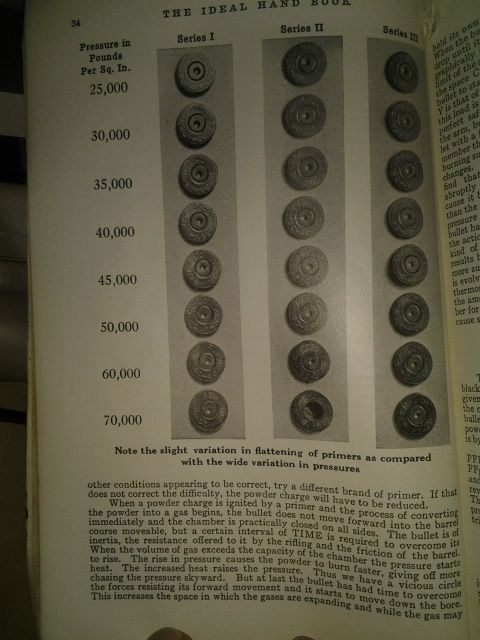I'm wondering if my flattened primers are a problem, or if I should ignore them.
Barrel is a 19.5" Alexander Arms, brass is Lapua, primers are CCI-450, bullet is 123 grain Nosler custom competition, powder charge is 30.2 grains of W/748. (max is listed as 30.5) Velocity is around 2550 fps depending on temperature outside. Brass ejects nicely to about 4 o'clock relative to the rifle.
What bothers me is that my primers all look really flattened. If this was happening with a bolt gun, I would suspect over pressure. However, my velocity indicates I'm not loading too hot.
I anneal the brass, and many cases have 8-12 loadings on them. If primers are loose when I seat them, if necks crack, or if any primers pop out during shooting, that brass is discarded.
Out of my most recent range session of 75 rounds fired, one primer popped out, and 4 cases had cracked necks, so I realize my cases are getting toward the end of their life cycle. However, many of the cases still have really tight primer pockets, so I presume they are still OK to use.
Are my flattened primers anything to be concerned with?
Barrel is a 19.5" Alexander Arms, brass is Lapua, primers are CCI-450, bullet is 123 grain Nosler custom competition, powder charge is 30.2 grains of W/748. (max is listed as 30.5) Velocity is around 2550 fps depending on temperature outside. Brass ejects nicely to about 4 o'clock relative to the rifle.
What bothers me is that my primers all look really flattened. If this was happening with a bolt gun, I would suspect over pressure. However, my velocity indicates I'm not loading too hot.
I anneal the brass, and many cases have 8-12 loadings on them. If primers are loose when I seat them, if necks crack, or if any primers pop out during shooting, that brass is discarded.
Out of my most recent range session of 75 rounds fired, one primer popped out, and 4 cases had cracked necks, so I realize my cases are getting toward the end of their life cycle. However, many of the cases still have really tight primer pockets, so I presume they are still OK to use.
Are my flattened primers anything to be concerned with?

Comment